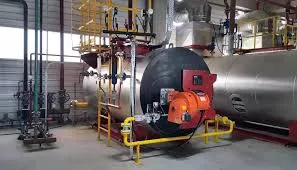Nov . 17, 2024 02:21 Back to list
investment casting parts factories
The Significance of Investment Casting Parts Factories in Modern Manufacturing
Investment casting, also known as lost-wax casting, is a manufacturing process renowned for its precision and versatility. It has become an essential method in producing intricate and high-quality metal components used in various industries, including aerospace, automotive, medical devices, and industrial machinery. Investment casting parts factories play a crucial role in this process, transforming raw materials into finished products that meet exact specifications.
Understanding Investment Casting
Investment casting involves creating a wax pattern of the desired part, which is then coated in a ceramic shell to form a mold. Once the shell is hardened, the wax is melted and drained away, leaving a hollow cavity in the shape of the part. Molten metal is then poured into this cavity, solidifying to form the final component. This technique allows for complex geometries and fine details that would be difficult to achieve with other methods, such as sand casting or CNC machining.
Efficiency and Precision in Production
Investment casting parts factories utilize advanced technologies and skilled craftsmanship to ensure high levels of accuracy and repeatability. The process often begins with computer-aided design (CAD) software, which allows engineers to create detailed models of components. Following the design phase, the factories employ state-of-the-art equipment for pattern creation, shell building, and metal pouring.
One of the main advantages of investment casting is its ability to produce parts with tight tolerances, often within ±0.5 mm or better. This precision reduces the need for extensive machining operations post-casting, which further shortens lead times and cuts costs. Additionally, investment casting allows for excellent surface finishes, minimizing the need for finishing work and enabling manufacturers to meet aesthetic and functional requirements simultaneously.
Material Versatility
investment casting parts factories

Investment casting factories are capable of working with a wide range of materials, including ferrous and non-ferrous metals such as stainless steel, carbon steel, aluminum, brass, and titanium. This versatility makes it possible for industries to obtain components that possess the desired mechanical properties while adapting to various applications. For example, aerospace components often require materials that can withstand extreme temperatures and stresses, while medical devices may need biocompatible materials.
The ability to cast complex shapes and features reduces the total weight of components, which is particularly important in industries like aerospace and automotive, where weight savings can lead to significant improvements in fuel efficiency and performance. Moreover, investment casting is conducive to producing intricate internal passages and cooling channels, which further enhances the functionality of the final product.
Sustainability and Cost-Effectiveness
With the increasing emphasis on sustainable manufacturing practices, investment casting parts factories are also making strides toward more environmentally friendly operations. The process generates minimal waste compared to traditional casting methods, as the wax patterns can often be reused, and the scrap metal can be melted and re-cast. This recycling aspect reduces the industry's overall carbon footprint and aligns with global efforts to conserve resources.
Additionally, while the initial tooling costs for investment casting may be higher than for other methods, the overall cost savings in terms of reduced machining, material waste, and labor often outweigh these expenses. As industries continue to seek more cost-effective manufacturing solutions, investment casting remains a competitive option.
Conclusion
Investment casting parts factories are pivotal in driving innovation and efficiency in modern manufacturing. Their capability to produce high-quality, intricate components with precision and adaptability is unmatched. As technology advances and industries evolve, these factories will continue to play an integral role in meeting the demands of various sectors, contributing to advancements in product designs, materials, and sustainability efforts. By understanding the advantages and capabilities of investment casting, companies can make informed decisions about their manufacturing processes and embrace the future of production technology. The ever-growing reliance on investment casting signifies its indispensable place in the global manufacturing landscape.
-
Centrifugally Cast Iron Water Main Pipe | Ductile Iron Solutions
NewsAug.24,2025
-
Durable Cast Steel Concrete Pipe Mold Bottom Rings & Base Trays
NewsAug.23,2025
-
Centrifugally Cast Iron Water Main Pipe for Reliable Mains
NewsAug.22,2025
-
Durable Centrifugally Cast Iron Water Main Pipe
NewsAug.11,2025
-
Centrifugally Cast Iron Water Main Pipes for Reliability
NewsAug.10,2025
-
High-Quality Centrifugally Cast Iron Water Main Pipes
NewsAug.09,2025


